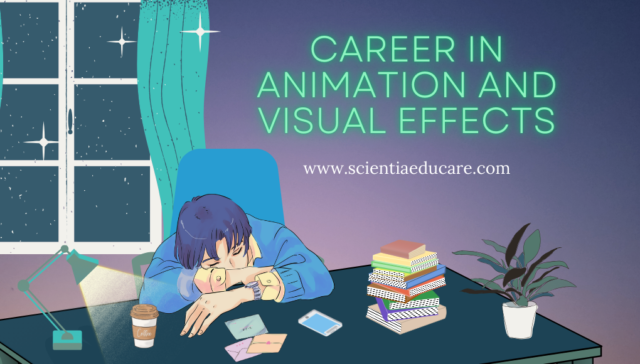Career in Animation and Visual Effects
Embarking on a career in Animation and Visual Effects (VFX) offers a dynamic and creative journey, blending artistic talent with cutting-edge technology. This field encompasses a wide array of opportunities, from crafting captivating characters to designing stunning visual sequences for films, games, and advertisements. This comprehensive guide will navigate you through the essential steps to secure a position in the animation and VFX industry, highlight global job prospects, and recommend top educational institutions to enhance your skills.
How to become an animator,
Entry-level visual effects jobs,
Animation job application tips,
Visual effects industry networking,
Building an animation portfolio
Table of Contents
- Understanding the Animation and VFX Industry
- Essential Skills and Competencies
- Educational Pathways
- Building a Strong Portfolio
- Networking and Industry Engagement
- Job Search Strategies
- Global Job Prospects and Resources
- Top Educational Institutions Worldwide
- Further Reading and Resources
Understanding the Animation and VFX Industry
The animation and VFX industry is a cornerstone of the entertainment sector, contributing significantly to films, television, video games, and advertising. Professionals in this field collaborate to create visual content that enhances storytelling and captivates audiences. The industry is diverse, offering roles such as:
- 3D Modelers: Craft detailed models of characters, environments, and objects.
- Animators: Bring characters and scenes to life through movement.
- Compositors: Seamlessly integrate various visual elements into a cohesive scene.
- Visual Effects Artists: Create realistic or fantastical effects that enhance the visual narrative.
Understanding the industry’s structure and the collaborative nature of these roles is crucial for aspiring professionals.
Essential Skills and Competencies
Success in animation and VFX requires a blend of artistic and technical skills:
- Artistic Abilities: Strong drawing skills, a keen eye for detail, and a solid understanding of anatomy, color theory, and composition.
- Technical Proficiency: Mastery of industry-standard software such as Autodesk Maya, Adobe After Effects, and Houdini.
- Storytelling: The ability to convey narratives effectively through visual media.
- Problem-Solving: Innovative thinking to overcome creative and technical challenges.
- Collaboration: Excellent communication skills to work effectively within multidisciplinary teams.
Continuous learning and adaptability are vital, given the rapid technological advancements in the field.
Educational Pathways
Pursuing formal education can provide a structured foundation in animation and VFX. Many institutions offer specialized programs that cover various aspects of the field. For instance, the Academy of Art University offers degrees in Animation & Visual Effects, providing comprehensive training in both disciplines.
When selecting a program, consider factors such as curriculum comprehensiveness, faculty expertise, industry connections, and available resources.
Building a Strong Portfolio
A compelling portfolio is your gateway to opportunities in the animation and VFX industry. To create an impactful portfolio:
- Showcase Diversity: Include a range of work that demonstrates your versatility across different styles and techniques.
- Highlight Your Best Work: Lead with your most impressive projects to capture attention.
- Provide Context: Accompany each piece with brief descriptions outlining your role, the tools used, and the objectives achieved.
- Keep It Updated: Regularly refresh your portfolio with recent work to reflect your current skills and growth.
An online portfolio or personal website can enhance accessibility and reach.
Networking and Industry Engagement
Building a professional network is instrumental in the animation and VFX industry. To expand your connections:
- Attend Industry Events: Participate in conferences, workshops, and film festivals to meet professionals and stay abreast of industry trends.
- Join Professional Associations: Organizations like the Visual Effects Society (VES) offer networking opportunities and resources.
- Engage on Social Media: Platforms like LinkedIn and industry-specific forums can facilitate connections with peers and potential employers.
- Seek Mentorship: Guidance from experienced professionals can provide valuable insights and career advice.
Building relationships within the industry can lead to collaborative opportunities and job referrals.
Job Search Strategies
When seeking employment in animation and VFX:
- Research Potential Employers: Identify studios and companies whose work aligns with your interests and strengths.
- Tailor Your Application: Customize your resume and cover letter to highlight relevant experience and skills for each position.
- Leverage Job Portals: Utilize industry-specific job boards and company career pages to find openings.
- Prepare for Interviews: Be ready to discuss your portfolio in detail, explaining your creative process and problem-solving approaches.
Persistence and resilience are key, as the industry is competitive.
Global Job Prospects and Resources
The animation and VFX industry offers diverse career opportunities worldwide. Here are some key regions and resources to explore:
North America
- United States: Home to major studios like Pixar, Disney, and Industrial Light & Magic, offering roles in film, television, and gaming.
- Canada: Cities like Vancouver and Montreal have thriving VFX industries, with studios such as Framestore and MPC.
Job Resources:















Thank you, your article surprised me, there is such an excellent point of view. Thank you for sharing, I learned a lot.